
Getting into the Thick of It - Intercooler R&D, Part 1: Stock Review
As a writer, the relationship between words and ideas has always interested me. Often, the same idea, expressed the same way, can have wildly different implications in different contexts.
An idea may be exceptionally positive in one instance, while equally negative in another. For example, let's take the word "quick." I think anyone who ended up on this blog post can agree that a quick Camaro is a good thing, right? But what about a quick job interview? "They must have really loved me!" Maybe"

Let's look at another word, "thin." We love thin phones and tablets; with every Apple keynote, we're once step closer to replacing the phrase "paper cut" with "smartphone cut." But when it comes to intercoolers, thin is generally not ideal. GM's engineers apparently didn't get this memo when they designed the 2016 Camaro 2.0T intercooler, but that's where we come in: We are developing an intercooler to try to squeeze some more power out of that LTG.
We've got numerous ideas on how to improve, but before we get into the thick of it, I'll give you the skinny on the stock Camaro intercooler.
Intercoolers - How do they work?
An intercooler, found in most vehicles equipped with forced-induction setups, is an important part of any turbo or supercharged system. Of course, in the case of our 2016 Camaro 2.0T, that "T" stands for turbo!
As you can probably infer from its name, an intercooler plays a vital role in managing temperatures. However, unlike some of those other heat exchangers living up there behind your Camaro's front bumper, the intercooler's ability to cool efficiently has a direct impact on performance. We need to know just a bit about turbochargers to find out why.
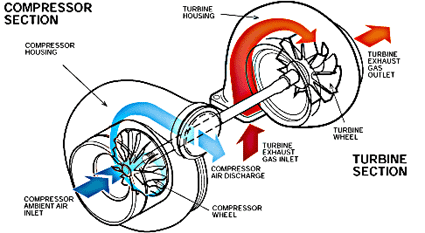
A turbocharger uses exhaust gases leaving the engine to spin a turbine that drives a compressor on the intake side of the engine. Due to the high-temp exhaust gas that is utilized to spin the compressor wheel, turbos see some of the highest temperatures in your engine bay. Some of that heat is transferred to the air on the compressor side, which, combined with the thermal effects of compression, raises its temperature.
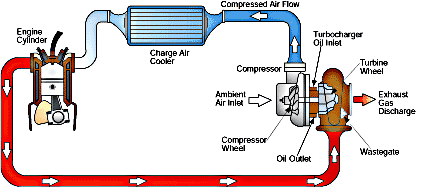
Also commonly known as a charge-air cooler, an intercooler lowers the temperature of that intake air after it has been compacted by the compressor wheel of the turbo. Cooler air is denser, which means you can squeeze even more of it into a given volume of space. When that space is a cylinder in your engine, this means a larger combustion event can be created with that additional air, resulting in more power and efficiency! Pretty cool, right? Now we just need to find a way to make that air even cooler"
Our Camaro Intercooler
Now, the Camaro 2.0T has a lot going on up front, including three heat exchangers mounted in front of the engine, taking advantage of the ambient airflow through the car's primary cooling avenue. And this is just the primary cooling channel! The heavy-duty cooling and braking package adds three more exchangers to other parts of the front end, among other added Chevy parts. But I digress.
Let's consult a photo to see what we're dealing with in the primary cooling channel.
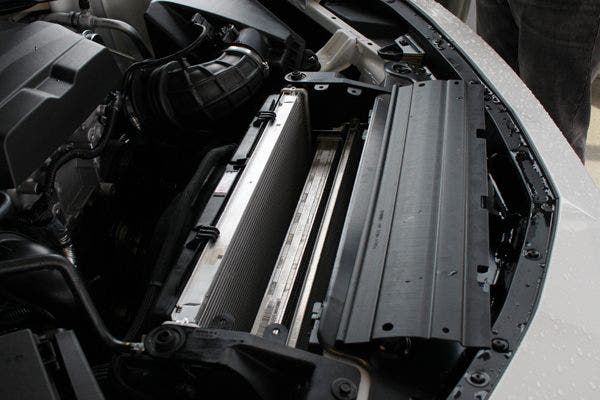
There are quite a few 2016 Camaro parts shoehorned into the front clip of this car!
In front, we have an AC condenser, and in back, the radiator (and its rear-mounted fan shroud). Sitting between the two, like a skinny little hot dog between some very disproportionate buns, you'll observe our 2016 Camaro 2.0T Intercooler.

Chevy parts - an American pastime! (hold the onions, please)
Notice how much space is available both behind and in front of the intercooler. A skinny intercooler will not cool as efficiently as a thicker one, so this is one area where we might be able to squeeze out more performance by thickening up this exchanger a little bit.
The Height of Cooling Ability?
You might also have noticed how much taller the radiator is than the intercooler. The radiator's cooling ability is paramount to your engine's longevity, but we are going to do some experimenting with intercooler height to see what impact a taller intercooler might have on the radiator. We speculate it may not have much of an effect at all, which means we could feed that intercooler some Wheaties and gain a bit in the height department, which would almost surely reveal some power gains.
We pulled the little stock Camaro intercooler out to take a closer look. With the exchanger removed, one can get an even better idea of how much space is available by looking up from below.
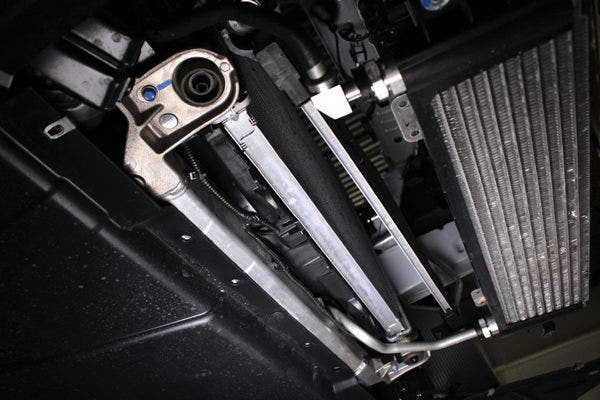
Here is what the stock intercooler looks like, once it's out of the car.
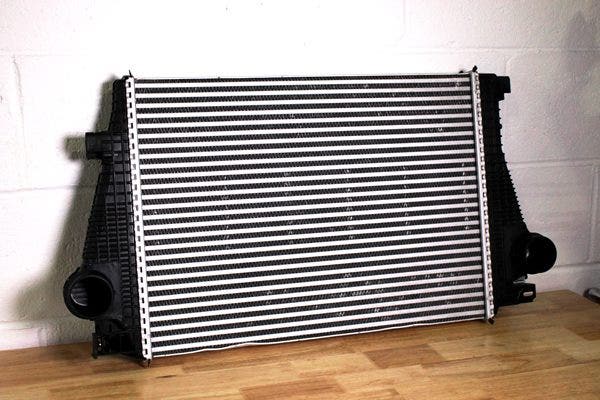
Like many modern vehicles, the 2016 Camaro 2.0T takes advantage of quick-disconnect fittings that facilitate easy maintenance and removal for Chevy parts. We will incorporate these fittings into our design to ensure the highest possible level of stock compatibility.
Here is the female disconnect on the intercooler pipe.
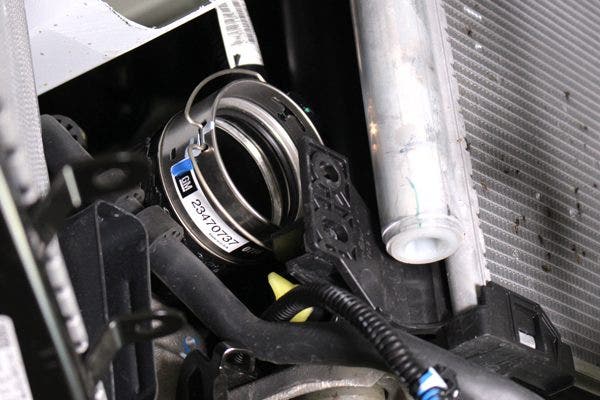
And here's the male side on the intercooler. We will be utilizing these in our 2016 Camaro parts.
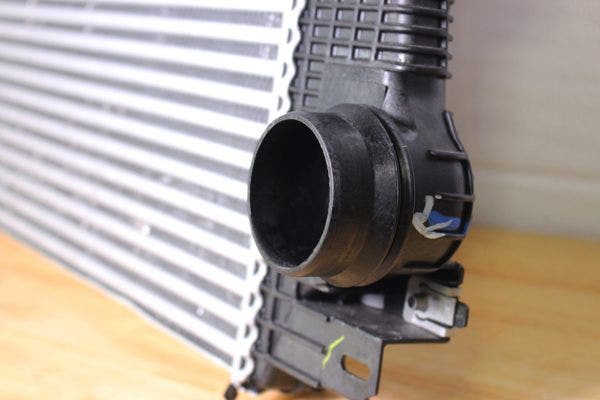
Cool, but what's next?
Now that we know how the stock system works and how we might improve it, our engineers are working on modeling some improved versions. Next time, I'll share with you some of those models so that we can see how Mishimoto's improved version of this 2016 Camaro intercooler might look.




